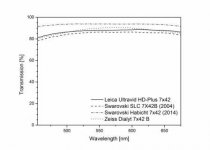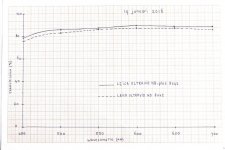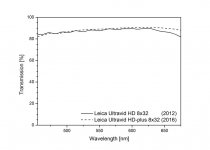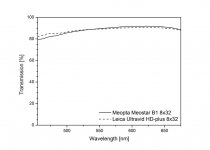Just curious, is the high transmission sparkle unique to 7x42 HD plus or present in 8x42 HD plus as well, maybe to a less extent?
To explain why people fall for the Leica HD Plus image, and to correct the false assumption that this term is simply talking about transmission, those answers might be revealed in a review of the use of the term "Sparkle" by reviewer Thomas Mennle RE the Leica Ultravid 8x42 HD Plus. Now please, this is
not to assert superiority of the Leica image, but simply to give explanation and context to why certain people have such affection for the UVHDPLUS Leica image with reference to the original question by this thread's OP; and, the OP's follow-up question regarding sparkle quoted in the paragraph above.
The paragraphs below are quotes from Mennle's two reviews of the Leica UVHDPLUS 8X42's
http://www.greatestbinoculars.com/index.html. One is simply a review of the Leica instrument; the other an 8X42 shootout with the Zeiss HT, Zeiss SF, Nikon EDG, Swarovision 8.5X42, Swarovski SLC, and the Leica if I haven't forgotten any. Brackets [] are used once to make a comment not coming from Mennle. Quotation marks and bolding have been added.
UVHDPLUS8X42: "Most saturated colours, combined with great sharpness and microcontrast in the center yield outstandingly beautiful images. The Swarovski SLC is most similar colourwise but duller with less punch and
sparkle. The Ultravid is a bit more prone to peripheral crescent flares than all others, nevertheless macrocontrast often class leading together with the Nikon EDG. This fits with the high colour saturation, because strangely the Ultravid manages to keep the image center almost free from veiling glare. The view is very easy even with open pupil, and the field of view feels much wider than it actually is. Mechanical quality is good, and industrial design is marvelous. For my taste it has the most beautiful image with that magic
sparkle that gets you addicted immediately."
"The Leica Ultravid 8x42 HD Plus offers compactness, great mechanics, best looks, and extremely beautiful high contrast images with saturated colours - and a high transmission
sparkle other SP prism designs don´t have yet. It is more prone to peripheral flaring than the others, but the beauty of the image center is magic - compact and very easy to hold, with warm, saturated, glowing colours and superb contrast, breathtaking in sunshine as well as on a dull day or in the twilight."
"I don´t care about brightness really, even with the Zeiss HT I cannot see more in the twilight, but I want that magic
sparkle in daylight vision, and it is in the clarity and vibrancy of the colours. The Ultravid has it, the HT has it, the Habicht 8x30 has it. The EDG, SE porro, SLC, Swarovision and SF don´t quite have it." [Note, as mentioned in Post #18, sparkle is not defined simply in terms of transmission, but also in the "clarity and vibrancy of colors"].
UVHDPLUS: "Most beautiful image with my favourite colours, high contrast, perfect sharpness, and awesome high transmission
sparkle."








